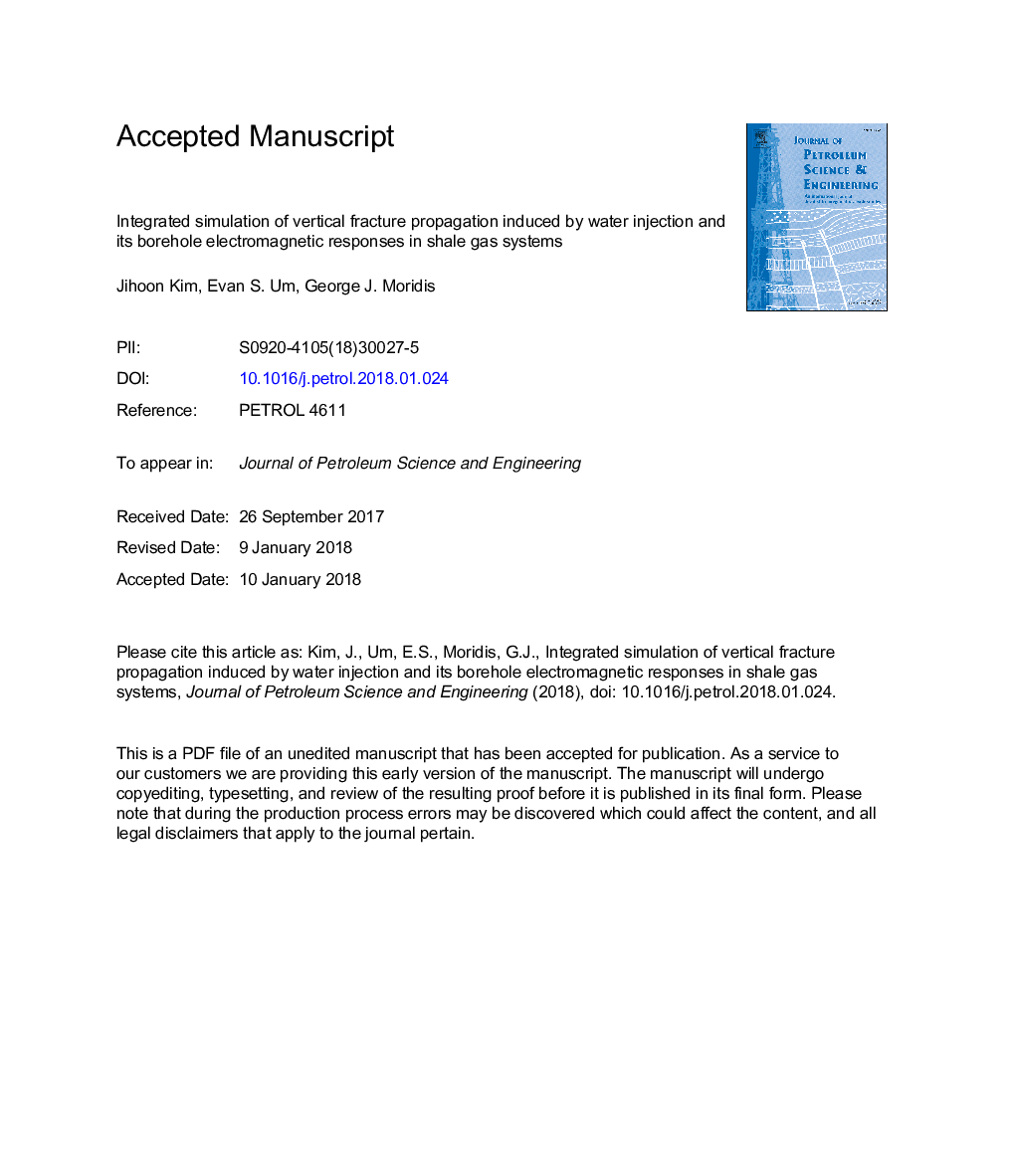| Article ID | Journal | Published Year | Pages | File Type |
|---|---|---|---|---|
| 8124963 | Journal of Petroleum Science and Engineering | 2018 | 30 Pages |
Abstract
We analyze fracture propagation induced by hydraulic fracturing with water injection and examine their detectability with crosswell electromagnetic (EM) geophysical methods. For rigorous 3D coupled flow-geomechanical modeling, we employ a numerical method that can model failure by tensile and shear stresses, dynamic nonlinear permeability, dual continuum approach, and thermo-poro-mechanical effects. From numerical simulation, we find that the fracture propagation is not the same as propagation of the water front, because fracturing is governed by geomechanics whereas water saturation is determined by multiphase flow. At early times, the water front is almost identical to the fracture tip, suggesting that the fracture is mostly filled with the injected water. However, at late times, movement of the water front is retarded compared to fracture propagation, yielding a significant gap between the water front and the fracture top, filled with reservoir gas. During fracture propagation, the coupled flow-geomechanical models are transformed via a rock-physics model into electrical conductivity models. We employ a full 3D finite-element EM geophysical simulator to evaluate the sensitivity of the crosswell EM method to fracture propagation. It is shown that anomalous distribution of electrical conductivity is closely related to the injected water saturation, but not closely related to newly created unsaturated fractures. Our numerical modeling experiments demonstrate that the crosswell EM method can be highly sensitive to electrical conductivity changes that directly indicate the migration pathways of the injected fluid. Accordingly, the EM method can serve as an effective monitoring tool for monitoring the injected fluids during hydraulic fracturing operations.
Related Topics
Physical Sciences and Engineering
Earth and Planetary Sciences
Economic Geology
Authors
Jihoon Kim, Evan Schankee Um, George J. Moridis,
